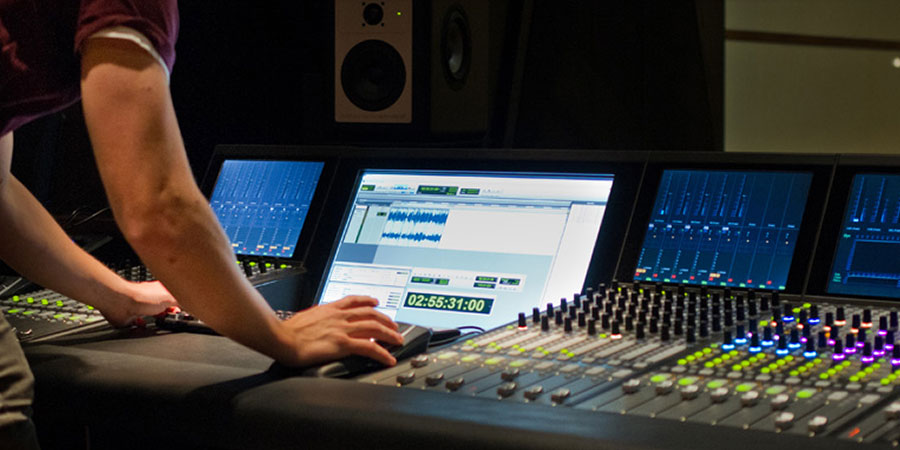Sound effects, voice-overs and music can add impact and emotion to your animation.
** A Voice-Over Helps Tell Your Story
The spoken word is a powerful vehicle that can pull in your audience, help them understand your story and make them feel empathy towards your character. Characters can be brought to life with a great voice-over performance.
Vocal elements in animation can include:
- Narrative dialogue
- Character dialogue
- Vocal sound effects (gasps, groans, screams)
** Animation Sound Effects that Help Build Excitement
When viewing animation, your mind expects to hear what your eyes are seeing. Animation sound effects should help the film "flow" and build excitement. For instance, when a character smacks his lips, adding a smacking sound will emphasize that moment in your animation. If a character jumps, you can increase interest by inserting the sound of the character landing on the ground.
** Adding Realism with Hard Effects
Hard effects add realism to the plot of your animation and should always be in sync with the animation on the screen.
Some examples may include:
- Car crash
- Gunshot
- Screeching tires
- Face slap
Recording hard effects can be challenging, which is why most people use licensed effects or royalty-free animation sound effects that can be found on the Internet.
Stereo audio files that are panned correctly add spatial realism to a scene. If a Lamborghini skids from the left and veers to the right, the sound of screeching tires should follow the direction of the car. Panning techniques help engage the viewer.
"How to Create Audio for Your Animation,"
## Create a Sound Map
As you read through your animation script, create a sound map and add reference notes of the different types of sounds you think would best serve your project. Close your eyes and ask yourself: what do I expect to hear at this precise moment? Should the scene include ambient noise like people talking in a busy restaurant, or the sound of plates being placed on a table?
A rough sound sketch can be as simple as adding extra notes into your script. For example:
- Effects (fx): Clock ticking
- Ambient Effects (ambfx): Crowd cheering
- Music: Uplifting
Effects can really help tell the story, depending on what's taking place at each moment. The scene will always tell you what sounds should be present and when. Make sure your sound effects include elements that tie in with a character's action and the dominant mood in the scene.
## Avoid Using Too Many Layers
As you build your story by layering sounds and effects, focus on one element at a time. Avoid adding too many effects as you can end up cluttering the sound and taking away from your audience's experience. Invest extra time with each element as it is introduced, to ensure your audio effects have room and don't cancel each other out. Sound effects can get in the way of the dialogue if they aren't chosen properly.
Picture and sound should coexist naturally without competing. If a scene's importance relies on the visual aspect, avoid adding too many sound effects, as they may be more of a distraction than enhancement.
Consider using low musical frequencies when dialogue is the main focus. For example, if a scene involves the sound of breaking glass and a woman screaming, the sound of breaking glass will make the female voice less audible because the pitch of the elements is in the same frequency range.
##Don't Obscure Dialogue
During dialogue, it's important to ensure voices are clearly understood. Ambient effects such as the sound of a storm, will make for a more dramatic presentation, but can be a distraction if the dialogue is buried under the mix making words more difficult to understand. Scenes can be brought to life by adding in the sounds you expect to hear, while keeping all audio elements in balance so that they blend in with the dialogue without becoming a distraction.
##Add Music That Aligns with the Action
Music can be used to add dramatic effects when major plot points occur. As you go through your script, make note of significant points such as "beginning of scene", "end of scene", "begin action" and "end action". These points will give you the opportunity to establish the tone or mood of the scene with suitable music tracks that support the action as well as help create atmosphere and suspense.
An effective technique for building excitement involves increasing the tempo and volume of the music track during a fight or action scene. Again, make notes on your script aligning with the action or emotion you need to portray.
Prime music insertion points can include:
- Major victory
- Tragedy
- Suspense
- Fear
Keep in mind how the music, sound effects and script interact with one another. All three components, when treated properly, should blend together and complement your project without becoming a distraction. When in doubt, less is more...
"Like if u Learn"


